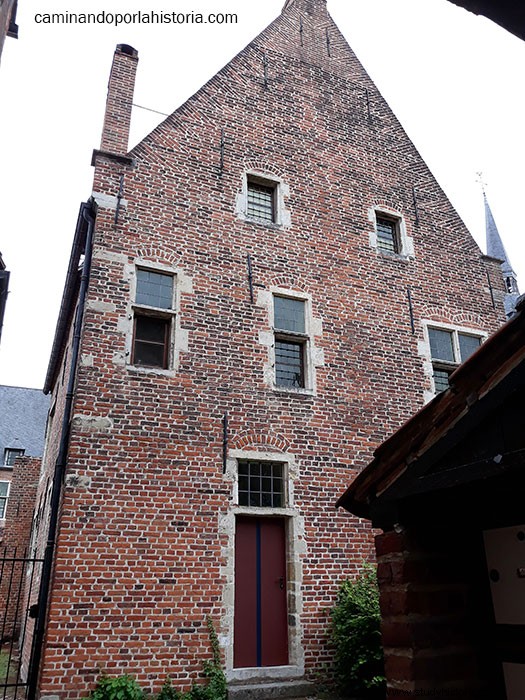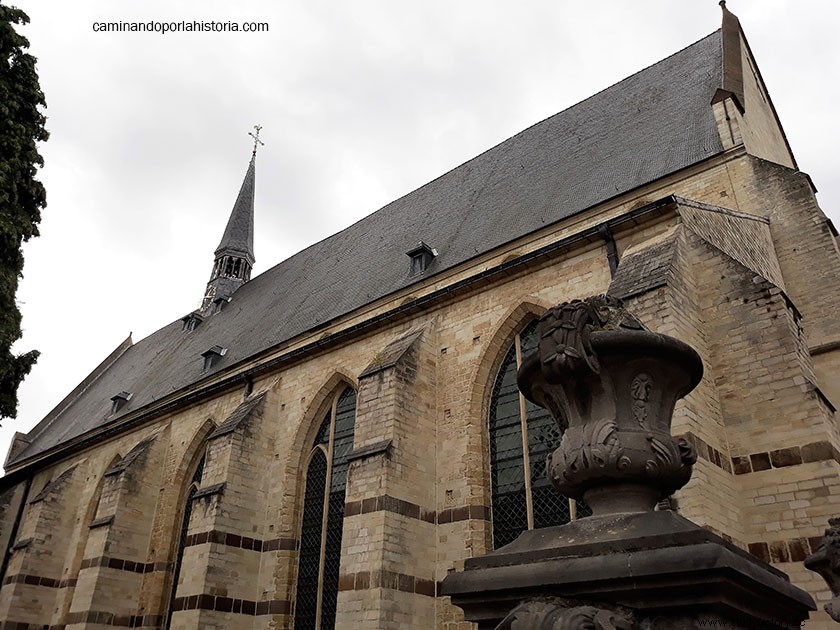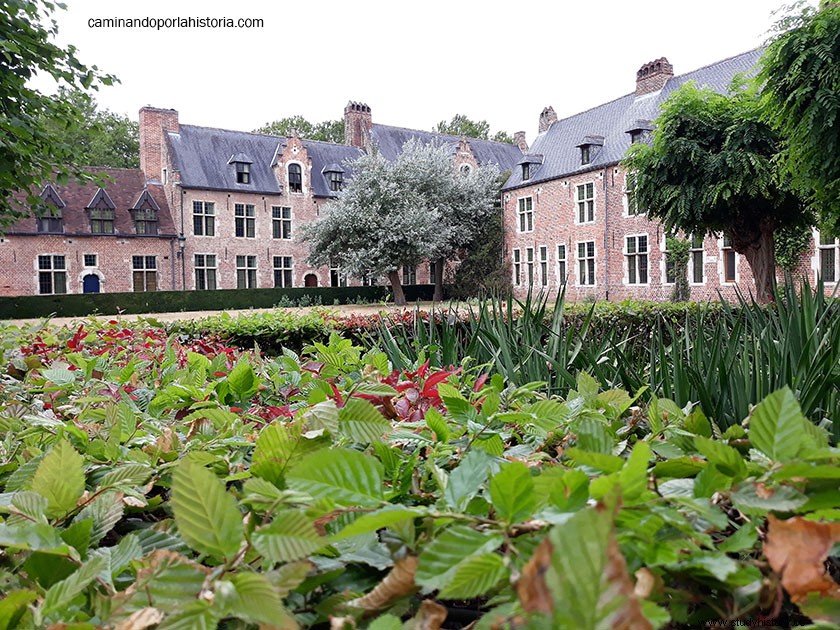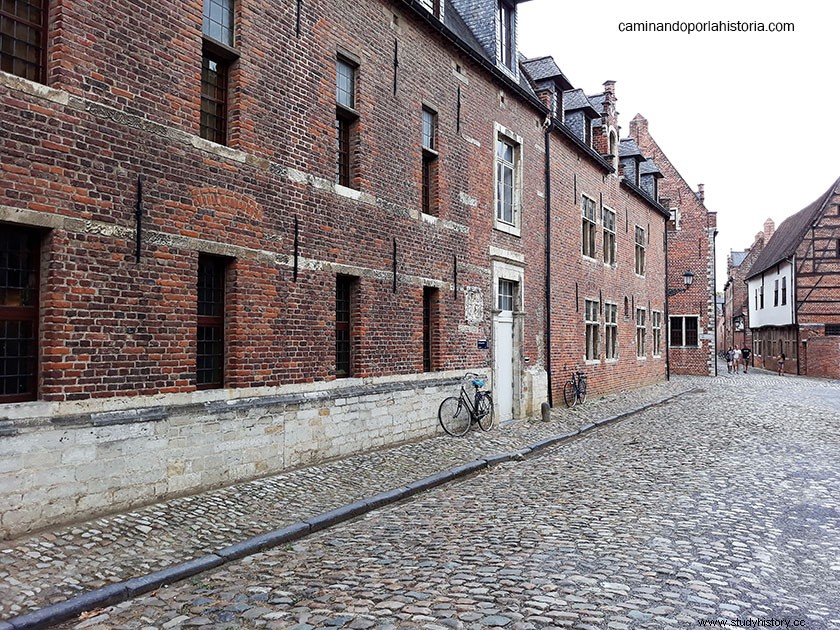
In 1998 the UNESCO World Heritage Committee decides to grant thirteen small neighborhoods, from twelve Belgian cities, the consideration of World Heritage. From that moment these small neighborhoods will become true medieval refuges in the XXI century. Many of them, such as the best known in the famous city of Bruges, have kept some traditions intact; Since the opening hours of the same, since the Middle Ages, are from 6:30 in the morning to 6:30 in the afternoon, outside these hours access to the beguinage is prohibited.
The beguines.
These are the true protagonists of these medieval shelters. Despite what we might think, they are not women belonging to a religious congregation as such, but rather women who, starting in the 13th century, decided to seek a common space for coexistence, due to the need for mutual protection. It is evident that in this temporal and geographical space where the Catholic Church permeates the main aspects of society, both, that is, Beguines and Catholic entities, will take parallel paths, although, as we will see, they sometimes collide deeply.
The beguines were mainly women from the lower layers of medieval society, most of them were widows of the many wars that occurred in the Middle Ages. Faced with the impossibility of finding a husband again, they approached these congregations to obtain protection. But in the beguinaries there was also room for women from the middle classes, such as one of the most illustrious, the medieval writer Hadewych from Antwerp. One of the main requirements for foster care was the vow of chastity, which did not include the need to adopt any type of religious vow, so their situation was free to leave this status and return to secular life. 
Portrait of a beguine made by the Flemish painter Robert Campin in the fifteenth century.
The way to make a living within these spaces was by collaborating with local industries, such as textiles or ceramics, or by becoming medieval copyists. But if they stood out in one aspect, it was in that of medicine, to illustrate it it is only necessary to go to the beguinage of Bruges attached to the medieval hospital of San Juan. The Beguines of this city in Flanders dedicated themselves to assisting the sick who arrived at said hospital, practicing medicine and even surgery, an aspect in which they strongly collided with the Catholic Church that persecuted said practices, hence they were even declared heretics.
The Beguines was not a movement exclusive to the Netherlands, but was extrapolated to different areas of the European continent as a way of life. Although we cannot forget the persecutions that were subjected by the Papacy of Rome, which could not allow women to be able to live a life with total independence from the church and from men. Despite this, it did not disappear with the Middle Ages, it only remains to remember the news that in April 2013 flooded the newspapers with the disappearance of the last beguine, Marcella Pattyn, in the north of Belgium.
The Beguinage of Leuven.
Going back to the 21st century; Let's learn a little more about the “Groot Begijnhof van Leuven” , name by which the "Great Beguinage of Lovania" is known by the locals, which happens to be the most outstanding of these medieval shelters that the Beguines left us.
Note that the first thing that draws attention to this place is its proximity to the nerve center of this small city full of students. Just five minutes on foot from the majestic Gothic town hall of Leuven, packed with curious travellers, we find a haven of peace that is really hard to put into words.
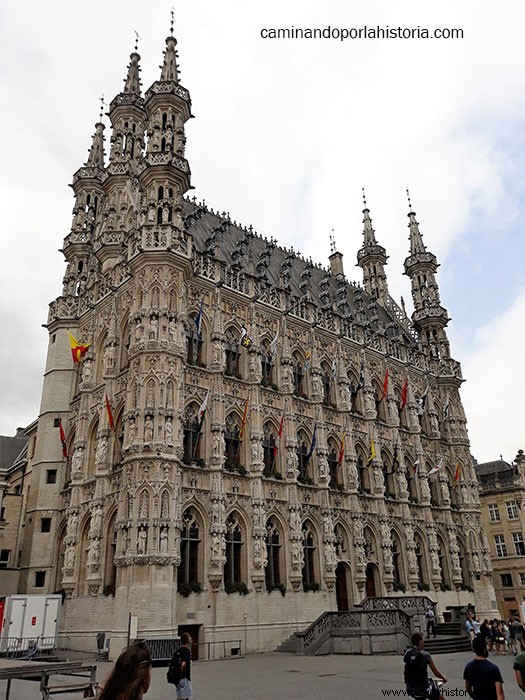
Leuven Town Hall
Its streets have maintained the traditional cobblestones that seem not to have undergone any reform, refrain from walking in heels. Life runs between the small parks, the narrow streets absent of any kind of souvenir shop, and two small canals. Only the inescapable bicycles of the Netherlands hinder the idyllic memory of the Middle Ages.
The 4.5-hectare Grand Beguinage of Leuven, which is considered to be one of the largest in present-day Belgium, was founded in 1232. Despite persecution suffered by the Beguines between the 13th and 14th centuries, survived to see the birth of the institution in 1425 that would end up becoming the final companion of the journey. I am referring to the University of Louvain, during history and today the most important in Belgium and one of the main in the world. Both spaces suffered the destruction of the two world wars of the 20th century, but both recovered hand in hand.
In 1962 the beguinage completely abandoned and in a very poor state despite being still inhabited by the last beguines, is acquired by the University in question. Today it is used as a student residence, as well as a refuge for some of the most outstanding visitors, professors, or lecturers who ask to spend a few days in this particular medieval quarter, a World Heritage Site. Without further ado, I leave you with some of the images taken on my recent visit.

Beguinage of Leuven
